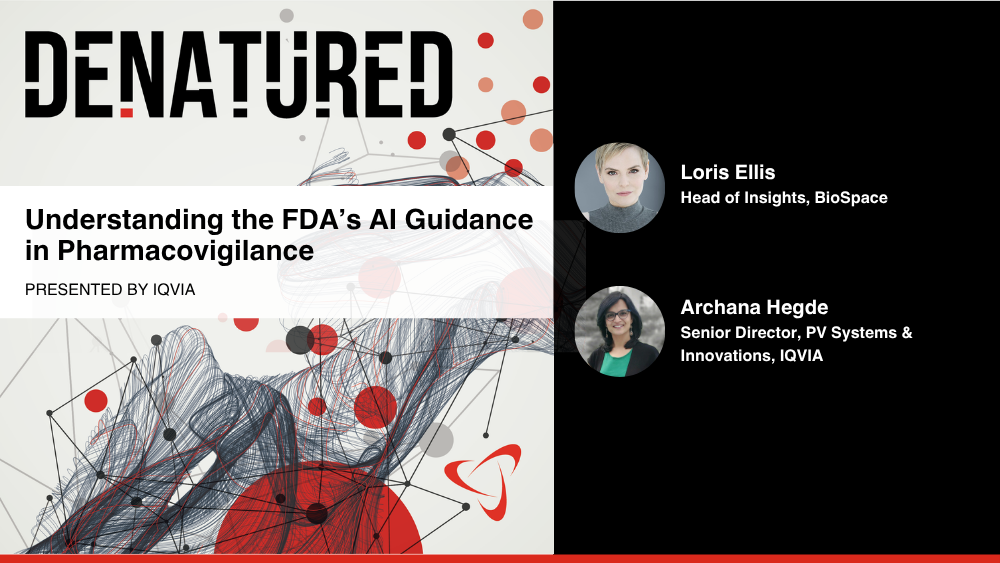APEKS-NP trial met primary endpoint of non-inferiority of cefiderocol compared to meropenem
APEKS-NP trial met primary endpoint of non-inferiority of cefiderocol compared to meropenem
OSAKA, Japan & FLORHAM PARK, N.J.--(BUSINESS WIRE)-- Shionogi & Co., Ltd. (hereafter “Shionogi”) today announced results from APEKS-NP, an international, double-blind, randomized Phase III clinical trial evaluating the efficacy and safety of the investigational antibiotic cefiderocol in patients with nosocomial pneumonia (NP). Results from the study showed that cefiderocol met the primary endpoint of non-inferiority compared to high-dose meropenem in all-cause mortality at 14 days after initiation of study drug. Cefiderocol is a siderophore cephalosporin with a novel mechanism for penetrating the outer cell membrane of Gram-negative pathogens including multidrug-resistant strains. The APEKS-NP clinical study findings will be presented as a late-breaking oral presentation at IDWeek™ 2019 on Thursday, October 3 at 2:15 p.m. EDT in Washington, D.C.
“Data from APEKS-NP provide meaningful evidence that cefiderocol has the potential to be an effective treatment option for severely ill hospitalized patients with pneumonia. In this trial, nearly 60 percent of patients were ventilated and approximately 33 percent experienced treatment failure of prior therapy,” said Dr. Tsutae “Den” Nagata, Chief Medical Officer, Shionogi. “Recently, several new antibiotics have been introduced to address some carbapenem-resistant infections, but they do not address all resistant Gram-negative pathogens. Clinicians are in urgent need of novel therapeutic approaches to overcome the multiple resistance mechanisms that make these strains so difficult to treat.”
Results from APEKS-NP showed cefiderocol met the primary endpoint of non-inferiority to high-dose meropenem, infused over three hours. At Day 14, all-cause mortality (ACM) in the modified intent-to-treat population was 12.4% for cefiderocol (18/145) and 11.6% for high-dose meropenem (17/146), respectively (difference: 0.8, 95% CI: –6.6; 8.2).
Cefiderocol also met key secondary endpoints of clinical and microbiological outcomes at test of cure (TOC), and Day 28 ACM:
- Clinical outcome at TOC: 64.8% cefiderocol versus 66.7% meropenem high dose (difference: –2.0, 95% CI: –12.5; 8.5)
- Microbiological eradication at TOC: 47.6% cefiderocol versus 48% meropenem high dose (difference: –1.4, 95% CI: –13.5; 10.7)
- Day 28 ACM: 21.0% cefiderocol versus 20.5% meropenem high dose (difference: 0.5, 95% CI: –8.7; 9.8)
“Carbapenem resistance is a growing problem in the U.S. and around the world, with increasing infections due to strains that are resistant to most or all currently available antibiotics. Patients with serious infections caused by resistant Gram-negative pathogens are facing a most serious challenge with high morbidity and mortality rates. These Phase III APEKS-NP data, combined with data from our Phase II APEKS-cUTI trial in complicated urinary tract infection, underscore the potential of cefiderocol to help solve an unmet medical need for patients battling life-threatening infections caused by deadly, hard-to-treat Gram-negative pathogens,” added Dr. Nagata.
Additional study results showed clinical cure rates were similar between treatment arms in the modified intent-to-treat population for major target pathogens at TOC:
- Klebsiella pneumoniae: 64.6% (31/48) cefiderocol versus 65.9% (29/44) meropenem high dose (difference: –1.3, 95% CI: –20.8; 18.1)
- Escherichia coli: 63.2% cefiderocol (12/19) versus 59.1% (13/22) meropenem high dose (difference: 4.1, 95% CI: –25.8; 33.9)
- Pseudomonas aeruginosa: 66.7%(16/24) cefiderocol versus 70.8% meropenem high dose (17/24) (difference: –4.2, 95% CI: –30.4; 22.0)
- Acinetobacter baumannii: 52.2% (12/23) cefiderocol versus 58.3% (14/24) meropenem high dose (difference: –6.2, 95% CI: –34.5; 22.2)
No unexpected safety signals were observed in the study; the incidence of treatment-emergent adverse events (TEAEs) were similar between treatment arms:
- TEAEs: 87.8% (130/148) cefiderocol versus 86.0% (129/150) meropenem high dose (difference: 1.8, 95% CI: –5.8; 9.5)
- Drug-related TEAEs: 9.5% (14/148) cefiderocol versus 11.3% (17/150) meropenem high dose (difference: –1.9, 95% CI: –8.8; 5.1)
- Treatment-emergent serious adverse events (SAEs): 36.5% (54/148) cefiderocol versus 30.0% (45/150) meropenem high dose (difference: 6.5, 95% CI: –4.2; 17.2)
- Drug-related SAEs: 2.0% (3/148) cefiderocol versus 3.3% (5/150) meropenem high dose (difference: –1.3, 95% CI: –5.0; 2.4)
- Discontinuation due to TEAEs: 8.1% (12/148) cefiderocol versus 9.3% (14/150) meropenem high dose (difference: –1.2, 95% CI: –7.6; 5.2)
- Discontinuation due to drug-related TEAEs: 1.4% (2/148) cefiderocol versus 1.3% (2/150) meropenem high dose (difference: 0.0, 95% CI: –2.6; 2.6)
- TEAEs leading to death: 26.4% (39/148) cefiderocol versus 23.3% (35/150) meropenem high dose (difference: 3.0, 95% CI: –6.8; 12.8)
About APEKS-NP
APEKS-NP (Acinetobacter baumannii, Pseudomonas aeruginosa, Escherichia coli, Klebsiella pneumoniae and Stenotrophomonas maltophilia in Nosocomial Pneumonia) was an international multicenter, double-blind, randomized, non-inferiority trial designed to evaluate cefiderocol for the treatment of nosocomial pneumonia including HAP, VAP, and HCAP caused by Gram-negative pathogens. Patients were randomized on a 1:1 basis to receive cefiderocol administered by intravenous infusion of two grams over a three-hour period every eight hours or high-dose meropenem administered by intravenous infusion of two grams over a three-hour period every eight hours, for seven to 14 days in hospital. Linezolid was additionally administered for at least five days in both arms to provide coverage for methicillin-resistant Staphylococcus aureus (MRSA) and for Gram-positive bacteria, in the cefiderocol group. Safety was investigated up to 28 days after the end of treatment unless there was an ongoing serious adverse event(s).
About Cefiderocol–An Investigational Antibiotic Agent
Cefiderocol is a siderophore cephalosporin with a novel mechanism for penetrating the outer cell membrane of Gram-negative pathogens including multidrug-resistant strains. It has a unique ability to overcome all three major mechanisms of carbapenem resistance (porin channel alterations, beta-lactamase inactivation, and efflux pump overproduction). Cefiderocol binds to ferric iron and is actively transported into bacterial cells through the outer membrane via the bacterial iron transporters, which function to incorporate this essential nutrient for bacteria.1 In addition, cefiderocol can also enter cells by passive diffusion through porin channels and is stable against all known classes of beta-lactamases, including both the metallo- and serine-beta-lactamases.2 These mechanisms allow cefiderocol to achieve higher concentrations in the periplasmic space where it can bind to receptors and inhibit cell wall synthesis in the bacterial cells.3 Data from multinational surveillance studies for cefiderocol demonstrated potent in vitro activity against a wide spectrum of Gram-negative pathogens including carbapenem-resistant Acinetobacter baumannii (A. baumannii), Pseudomonas aeruginosa (P. aeruginosa), Enterobacteriaceae, and Stenotrophomonas maltophilia (S. maltophilia).4 Cefiderocol has poor in vitro activity against Gram-positive or anaerobic bacteria. The clinical significance of in vitro data is unknown.
Shionogi submitted a New Drug Application to the U.S. Food and Drug Administration (FDA). Cefiderocol was designated as a Qualified Infectious Disease Product (QIDP) by the FDA with the assigned action date of November 14, 2019 under the Prescription Drug User-Fee Act (PDUFA). Additionally, Shionogi also submitted a marketing authorization application of cefiderocol to the European Medicines Agency and it was accepted in March 2019.5
About Gram-negative Infections
The increasing resistance of many infections caused by Gram-negative bacteria to existing therapies, including carbapenem-resistant Enterobacteriaceae and non-fermenting species such as P. aeruginosa, A. baumannii, and S. maltophilia, means there is a critical need for new, effective therapies.4, 6-9 There are an increasing number of Gram-negative pathogens resistant to multiple antibiotics, making them difficult to treat and resulting in high mortality rates.10 In the U.S., at least two million people are infected with antibiotic-resistant bacteria, and at least 23,000 people die as a result each year.11 In the EU, about 25,000 patients die from an infection with the selected multidrug-resistant bacteria.12 The World Health Organization and the Centers for Disease Control and Prevention have identified carbapenem-resistant strains of Enterobacteriaceae, P. aeruginosa, and A. baumannii as the top priority in the research and development of new antibiotics.6,11
About Shionogi
Shionogi & Co., Ltd. is a Japanese major research-driven pharmaceutical company dedicated to bringing benefits to patients based on its corporate philosophy of “supplying the best possible medicine to protect the health and wellbeing of the patients we serve.” The company currently markets products in several therapeutic areas including anti-infectives, pain, cardiovascular diseases, and gastroenterology. Our pipeline is focused on infectious disease, pain, CNS, and oncology. For more information on Shionogi & Co., Ltd., visit www.shionogi.co.jp/en. Shionogi Inc. is the U.S. subsidiary of Shionogi & Co., Ltd. based in N.J. For more information on Shionogi Inc., please visit www.shionogi.com.
Forward-Looking Statements
This announcement contains forward-looking statements. These statements are based on expectations in light of the information currently available, assumptions that are subject to risks and uncertainties which could cause actual results to differ materially from these statements. Risks and uncertainties include general domestic and international economic conditions such as general industry and market conditions, and changes of interest rate and currency exchange rate. These risks and uncertainties particularly apply with respect to product-related forward-looking statements. Product risks and uncertainties include, but are not limited to, completion and discontinuation of clinical trials; obtaining regulatory approvals; claims and concerns about product safety and efficacy; technological advances; adverse outcome of important litigation; domestic and foreign healthcare reforms and changes of laws and regulations. Also for existing products, there are manufacturing and marketing risks, which include, but are not limited to, inability to build production capacity to meet demand, unavailability of raw materials, and entry of competitive products. The company disclaims any intention or obligation to update or revise any forward-looking statements whether as a result of new information, future events, or otherwise.
References
1. Ito A, Nishikawa T, Matsumoto S, et al. Siderophore Cephalosporin Cefiderocol Utilizes Ferric Iron Transporter Systems for Antibacterial Activity against Pseudomonas aeruginosa. Antimicrob Agents Chemother. 2016;60(12):7396−7401.
2. Ito-Horiyama T, Ishii Y, Ito A, et al. Stability of Novel Siderophore Cephalosporin S-649266 against Clinically Relevant Carbapenemases. Antimicrob Agents Chemother. 2016;60(7):4384−4386.
3. Tillotson GS. Trojan Horse Antibiotics—A Novel Way to Circumvent Gram-Negative Bacterial Resistance? Infectious Diseases: Research and Treatment. 2016;9:45−52. doi:10.4137/IDRT.S31567
4. Hackel M, Tsuji M, Yamano Y, et al. In Vitro Activity of the Siderophore Cephalosporin, Cefiderocol, Against a Recent Collection of Clinically Relevant Gram-Negative Bacilli from North America and Europe, Including Carbapenem Non-Susceptible Isolates: The SIDERO-WT-2014 Study. Antimicrob Agents Chemother. 2017;61(9):e00093−17. doi.org/10.1128/AAC.00093-17.
5. Shionogi & Co, Ltd. Shionogi announces submission of cefiderocol marketing authorisation application. April 1, 2019. Retrieved from http://www.shionogi.co.jp/en/company/news/2019/pmrltj000000418y-att/e_190401_2.pdf.
6. World Health Organization. Global priority list of antibiotic-resistant bacteria to guide research, discovery, and development of new antibiotics. February 27, 2017. Retrieved from https://www.who.int/medicines/publications/global-priority-list-antibiotic-resistant-bacteria/en/.
7. Diene SM, Rolain JM. Carbapenemase genes and genetic platforms in gram-negative bacilli: Enterobacteriaceae, Pseudomonas and Acinetobacter species. Clin Microbiol Infect 2014; 20:831−38.
8. Livermore DM. Current epidemiology and growing resistance of gram-negative pathogens. Korean J Intern Med 2012; 27:128−42.
9. Brooke JS. Stenotrophomonas maltophilia: an emerging global opportunistic pathogen. Clin Microbiol Rev 2012; 25:2−41.
10. Tangden T, Giske CG. Global dissemination of extensively drug-resistant carbapenemase-producing Enterobacteriaceae: clinical perspectives on detection, treatment and infection control. J Intern Med 2015; 277:501−12.T.
11. Centers for Disease Control and Prevention (CDC). Antibiotic Resistance Threats in the United States 2013. Retrieved from https://www.cdc.gov/drugresistance/pdf/ar-threats-2013-508.pdf.
12. European Centre for Disease Prevention and Control (ECDC). Technical Report: the bacterial challenge: time to react. 2009. Retrieved from
https://ecdc.europa.eu/sites/portal/files/media/en/publications/Publications/0909_TER_The_Bacterial_Challenge_Time_to_React.pdf.
View source version on businesswire.com: https://www.businesswire.com/news/home/20191002005169/en/
Contacts
Shionogi & Co., Ltd.
Corporate Communications
Telephone: +81-6-6209-7885
Fax: +81-6-6229-9596
Shionogi Inc. U.S. Media Contact
Lindsay Bohlander
Director, Advocacy & PR
+1 973-307-3718
lindsay.bohlander@shionogi.com
Source: Shionogi & Co., Ltd.





